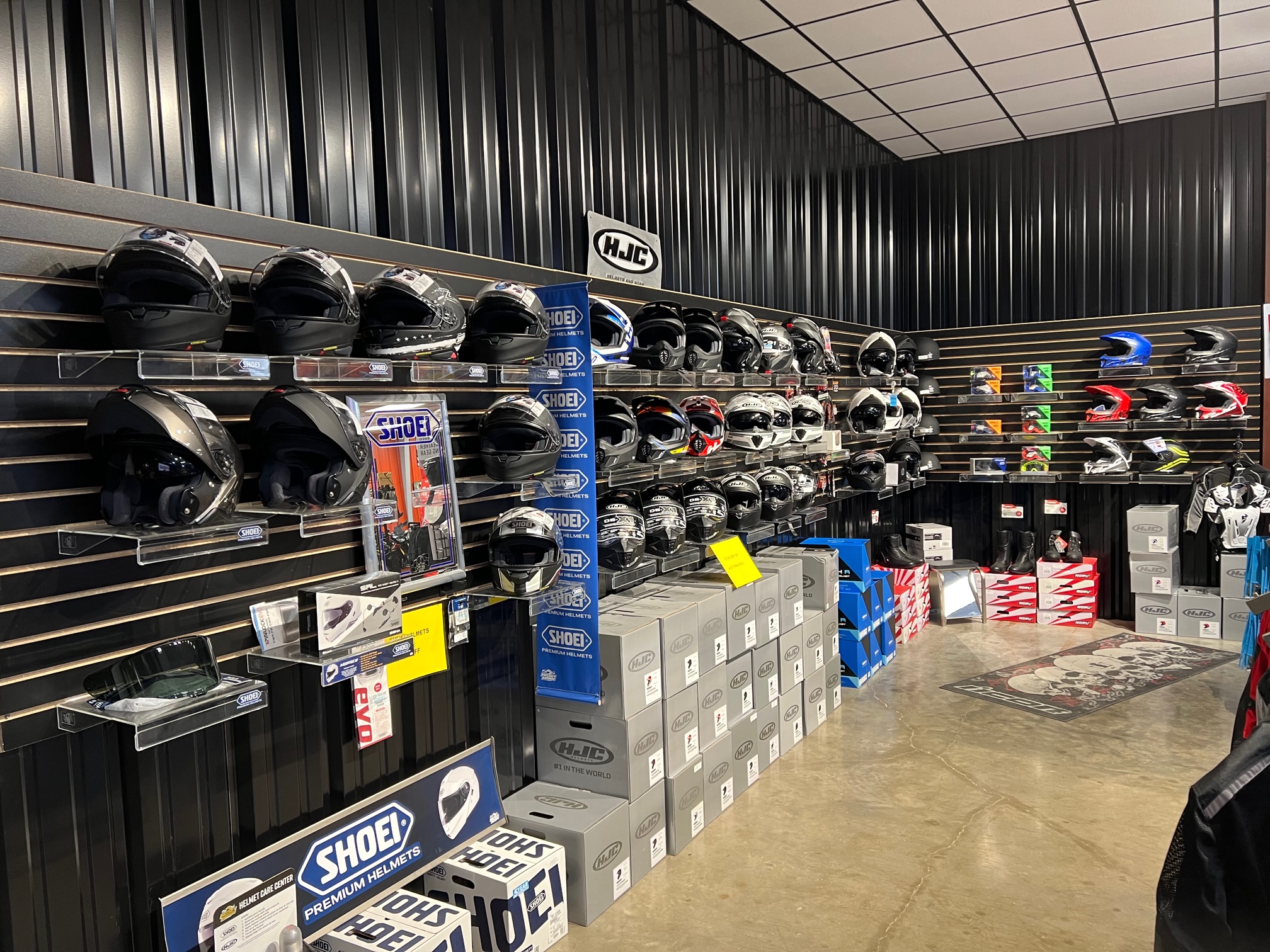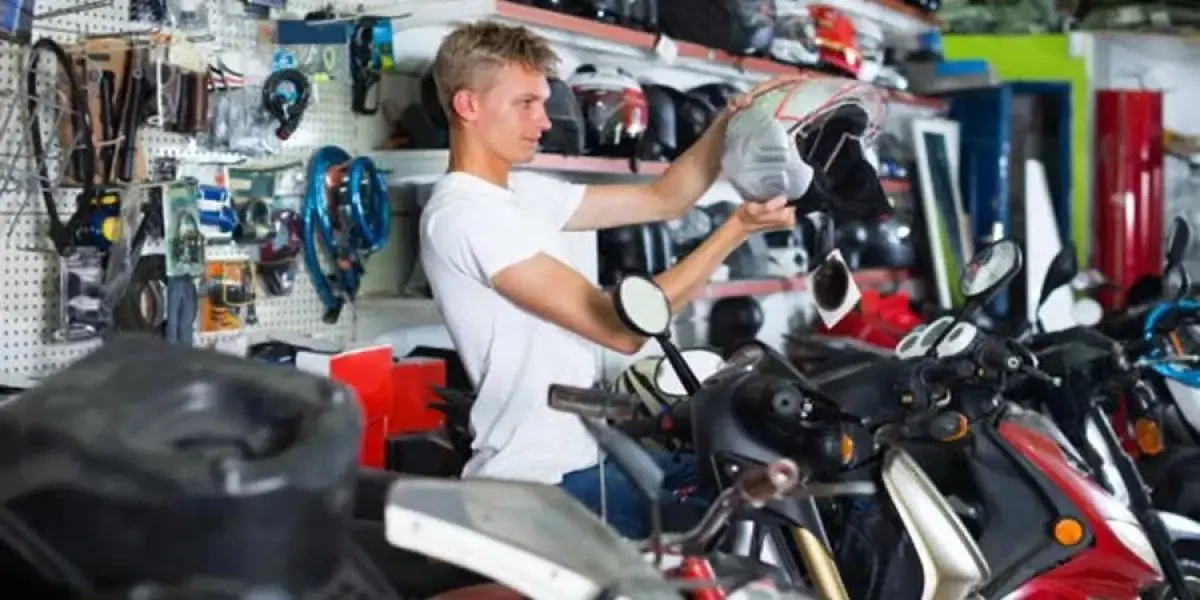Your Best Motorbike Shop for High Quality Parts and Accessories
Your Best Motorbike Shop for High Quality Parts and Accessories
Blog Article
Comprehending the Vital Parts of a Motorcycle: A Comprehensive Guide for Lovers
For motorbike lovers seeking to elevate their riding experience and guarantee their bikes run efficiently, understanding the vital components of a motorbike is critical. Each aspect, from the engine's intricate operations to the crucial function of the braking systems, not just affects efficiency however also safety and convenience. This overview will certainly go through the essential components that every biker must know with, allowing notified choices in both maintenance and potential upgrades. As we start this expedition, one must ask: how does each part connect to produce the seamless ride every enthusiast seeks?
Engine Elements

The camshaft plays a vital duty in regulating the timing of the engine's valves, making certain the specific opening and closing essential for effective fuel and air intake, along with exhaust expulsion. This timing is important to preserving ideal engine performance and effectiveness. Additionally, the carburetor or gas shot system, depending upon the bike model, is accountable for mixing air with gas in the right proportion for combustion.
The cooling system, either air or liquid-based, functions to preserve the engine's temperature level within functional limits, preventing getting too hot and guaranteeing longevity - motocross parts nz. Each element, meticulously created and integrated, adds to the seamless operation of the engine, specifying the motorcycle's power result and total efficiency
Transmission System
Integral to the bike's functionality, the transmission system guarantees effective power transfer from the engine to the wheels. This system comprises a number of critical parts, consisting of the clutch, gearbox, and last drive, each playing an important role in equating the engine's power right into activity. The clutch, normally run by a hand bar, offers to disengage the engine and involve from the transmission, permitting for smooth gear changes and regulated velocity.
The transmission, often described as the transmission appropriate, consists of a collection of gears that riders can manually shift via to change the bike's rate and torque output. These equipments are prepared in a series that enables the motorbike to accelerate smoothly and preserve optimum engine performance throughout various rates. The majority of motorbikes utilize a sequential gearbox, calling for the motorcyclist to shift gears in a fixed order.
Braking Systems
While understanding the transmission system is crucial to harnessing a bike's power, equally crucial is the capacity to regulate and quit that power properly, which is where braking systems enter into play. Brakes are critical for safety and security and efficiency, giving the cyclist with the necessary control to browse various surfaces and conditions. Usually, bikes include 2 kinds of stopping systems: disc brakes and drum brakes.
Disc brakes are more common in contemporary motorcycles because of their superior efficiency. They consist of a brake disc, caliper, and pads. When activated, the caliper squeezes the brake pads versus the spinning disc, transforming kinetic energy into warmth, thus slowing down the wheel. This system supplies much better warm dissipation, consistent performance, and enhanced stopping power, particularly in damp problems.
On the other hand, drum brakes, though less common, are still found in some motorbikes. They work by pressing brake shoes versus the inner surface area of a drum connected to the wheel. While generally less effective in heat dissipation and stopping power, drum brakes are simpler and much more cost-efficient.
Recognizing these braking systems' nuances allows motorcyclists to keep their motorbikes appropriately and appreciate the engineering that ensures effective and risk-free stopping.
Suspension and Guiding
Suspension and steering systems are important parts that significantly affect a bike's handling and experience comfort. The shock absorber, including forks at the front and shock absorbers at the back, soaks up road abnormalities, enhancing security and control. Front forks, upside down or generally telescopic, compress and rebound to mitigate impacts, while back shock absorbers maintain tire contact with the road, crucial for grip and safety.
Steering, centered around the handlebars, links the biker to the bike's directional control. The steering head bearings ensure smooth operation, permitting accurate maneuverability. Correct placement and upkeep of these bearings are vital for predictable guiding reaction and lowering rider fatigue.
The suspension's adjustability is another vital aspect; preload, damping, and rebound setups allow modification to match numerous riding conditions and designs. This adaptability is necessary for maximizing performance, whether navigating urban streets or dealing with rugged routes. Developments like electronic shock absorber use real-time modifications, improving adventure quality across diverse terrains.

Electric Equipments
After guaranteeing a smooth and regulated trip through effective suspension and steering systems, attention turns to the electrical systems, an essential facet of modern motorcycles. These systems play a critical role not just in beginning the engine however likewise in powering various elements that boost the functionality and safety of the motorbike.
At the heart of a motorbike's electrical system look at these guys is the battery, which shops electric power needed for beginning the engine and powering supporting systems - moto parts nz. The generator or generator, coupled with the rectifier-regulator, makes sure the battery stays billed while the bike is in procedure, converting power into electric power and preserving voltage degrees
The ignition system, one more vital element, is accountable for igniting the air-fuel mix in the engine's cylinders. Modern motorbikes usually utilize an electronic ignition system, providing greater effectiveness and integrity contrasted to traditional systems.
Lights systems, consisting of fronts lights, tail lights, and indicators, are additionally important, making certain visibility and safety for the biker. Added digital parts such as sensors, control units, and shows add to innovative functions like fuel shot management, anti-lock stopping systems (ABDOMINAL), and digital dashboards, further improving the riding experience.
Final Thought
A detailed comprehension of a motorbike's essential parts, consisting of the engine, transmission system, stopping systems, suspension, guiding, and electric systems, is essential for lovers aiming to enhance safety, comfort, and efficiency. Mastery of these elements permits for informed decisions pertaining to maintenance and upgrades, ultimately enhancing the riding experience. By incorporating this expertise, bikers can ensure their motorcycles run at peak efficiency and dependability, consequently making best use of both enjoyment and durability of their cars.
For motorbike fanatics looking to boost their riding experience and guarantee their bikes run efficiently, recognizing the vital parts of a motorbike is extremely important.Integral to the motorbike's performance, the transmission system makes sure efficient power transfer from the engine to the wheels.While understanding the transmission system is vital to harnessing a motorbike's power, just as important is the capability to regulate and stop that power effectively, which is where braking systems come right into play. Normally, from this source motorcycles include 2 types of braking systems: disc brakes and drum brakes.
A comprehensive comprehension of a motorcycle handlebars bike's important elements, including the engine, transmission system, stopping devices, suspension, guiding, and electrical systems, is crucial for fanatics intending to maximize performance, convenience, and security.
Report this page